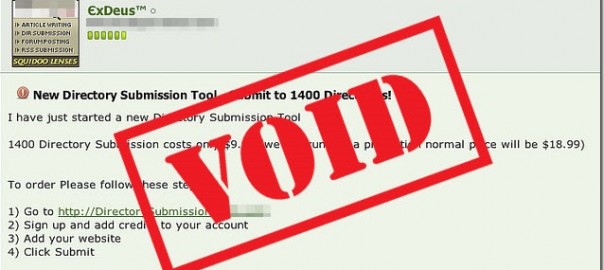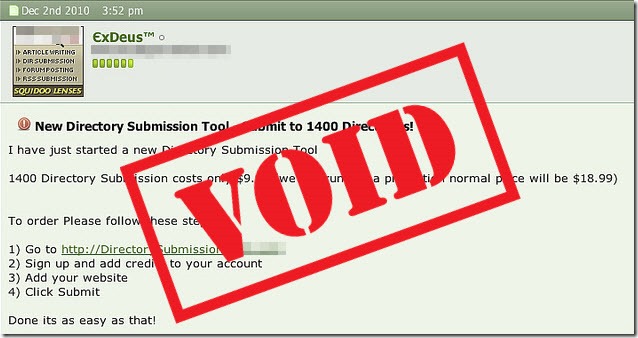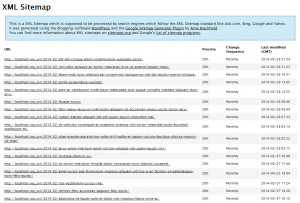Joe is Head of Content for British digital marketing agency, Bespoke Digital. He has written extensively on SEO, digital marketing and social media (amongst other things).
For a long time directories occupied an important role in the evolution of the web. Before Google and complex search algorithms most of the internet was categorised using Yahoo’s original web directory which categorised websites manually by niche and from which the company took its name.
Things have changed a great deal since then and last year, twenty years since its inception, Yahoo rather innocuously announced the death of its directory, bringing to a close a fundamental chapter in the history of the internet.
How directories have fallen from grace since 1994. In an era when a link was valued by search engine algorithms merely on the grounds of it being a link, getting listed in as many directories as possible was a quick and effective way of boosting your search rankings.
And then in 2012 Google introduced Penguin and everything changed.
Are Directories Really Dead?
In their rather amusing parody piece, Search Engine Land drafted an open letter from Google to local directory sites that explains in a tellingly sarcastic tone how their position in the SERPs has been “tanking” over the last year, but “at least you have figured out your 2003 SEO strategy”. It serves as one of the best summaries I’ve read of the state of directories as they stand today and isn’t without a sense of irony.
Despite the ravages of Penguin’s war on spammy link building, which has seen vast numbers of directories plummet into insignificance in the search rankings (and many others banned altogether), it should be stated from the outset that the directory is far from dead. Used correctly, sparingly and most importantly of all, discerningly, directories can still play an important role in helping drive referral traffic to your site as well as bolstering your SEO campaign, especially on a local level.
Directories like dmoz.org and botw.org are powerful, but difficult, places to get your website listed, on the basis that they are edited by humans, extremely popular and search engines like Google and Bing still pay a lot of attention to them. There are many other powerful directories out there though, like Yelp that can help you increase exposure to your business (if not necessarily your website) in the SERPs.
When To Use Directories
The important thing to remember here is not to view directories purely as an SEO strategy to boost your website rankings. You should avoid using fixed keyword heavy anchor text and under no circumstances try to squeeze your entire directory push into a six month campaign.
I’ve listed four important considerations that you should take into account when you are approaching directories.
1. Local
One of the huge benefits directories can bring is a boost to your website rankings in local search.
Getting your site in Google+ Local (formerly Google Places) is essential and will tie your location to your associated Google Plus account, which will help you rank for local searches. Google+ Local is far from the only directory that will help you rank for local search either. There are plenty of good local directories that can help push you up the rankings for local searches.
As well as links, citations on quality directories can also play a great part so don’t ignore a directory just because they’re not offering a link back to your website. It’s important to remember that real directories have been created as referral tools for real people looking for local businesses and should be seen as such. Whether someone gets your company’s details from your website or a directory is neither here nor there when you’ve got them on the phone. The concept of optimising your listings on powerful directories, in isolation to your website as separate drivers of enquiries and sales, is known as Barnacle SEO.
NAP consistency is also key here, especially when building citation listings. NAP stands for Name Address and Phone number and writing it in a consistent format helps Google with data normalisation, as its algorithm lists multiple citations of your business. Many businesses operate different services across multiple locations and often turn to citation services like Yext or Localeze to manage this process.
2. Niche
Directories that only contain listings of genuine businesses in your industry sector or niche are well worth looking into.
Whilst quality (see below) is always a factor, it’s far less likely that these sites have been built for SEO purposes. As well as carrying far more weight in SEO terms due to their relevancy these sites are far more likely to drive relevant traffic to your website as visitors are far more likely to be looking for your services in the first place.
3. Quality
Spotting the good from the bad and the downright ugly may be second nature to some people but it’s not always obvious to spot the potentially toxic directory from the genuine one.
Talking of ugliness, don’t base your assumptions on flashy website design. Some extremely powerful niche directories I’ve come across have incredibly poor website design and look like they’re still stuck in the 90’s.
Below are some important warning signs you should always be on the lookout for when it comes to bad directories:
- Directories that have automatic inclusion and are not edited by humans
- Directories that advertise their PR or DA
- Directories that have keyword anchored links to sites
- Directories that contain words like ‘add your URL’ or ‘suggest a site’ or ‘submit a link’
- Directories that are rarely cached (if more than 2 weeks ago, then forget it)
- Directories that are very new or have very low DA
4. Submissions
You should always take care to make sure your own website is up to scratch as any directory worth its salt will have human editors who will scrutinise your website before accepting and publishing your listing. If your website is still in progress or is poorly built then you can expect a lot of rejections.
Conclusion
When submitting to directories you have to take your SEO hat off and keep telling yourself that you’re not just doing this to boost your website rankings. We’ve already mentioned the concept of barnacle SEO and although it’s more likely that you’ll want to drive people towards your website and not your directory listings, it is worth remembering that many people still use directories to find local businesses and often skip the website bit altogether before picking the phone up.
Whilst there’s no point in denying the fact that directories should not be a major part of any prudent SEO strategy, it’s also worth noting that they have a long and rich heritage in the evolution of the internet and can still play a role at both an SEO and referral traffic level. Whilst it’s inevitably disastrous to rely too heavily on them, it’s also silly to ignore them entirely as a means of drumming up exposure for your business in search, especially at the local level.
* Leader image made with photo by Search Influence
Understanding Directory Listings: Use Cases & Safety
The post Understanding Directory Listings: Use Cases & Safety appeared first on Search Engine People Blog.
(401)







